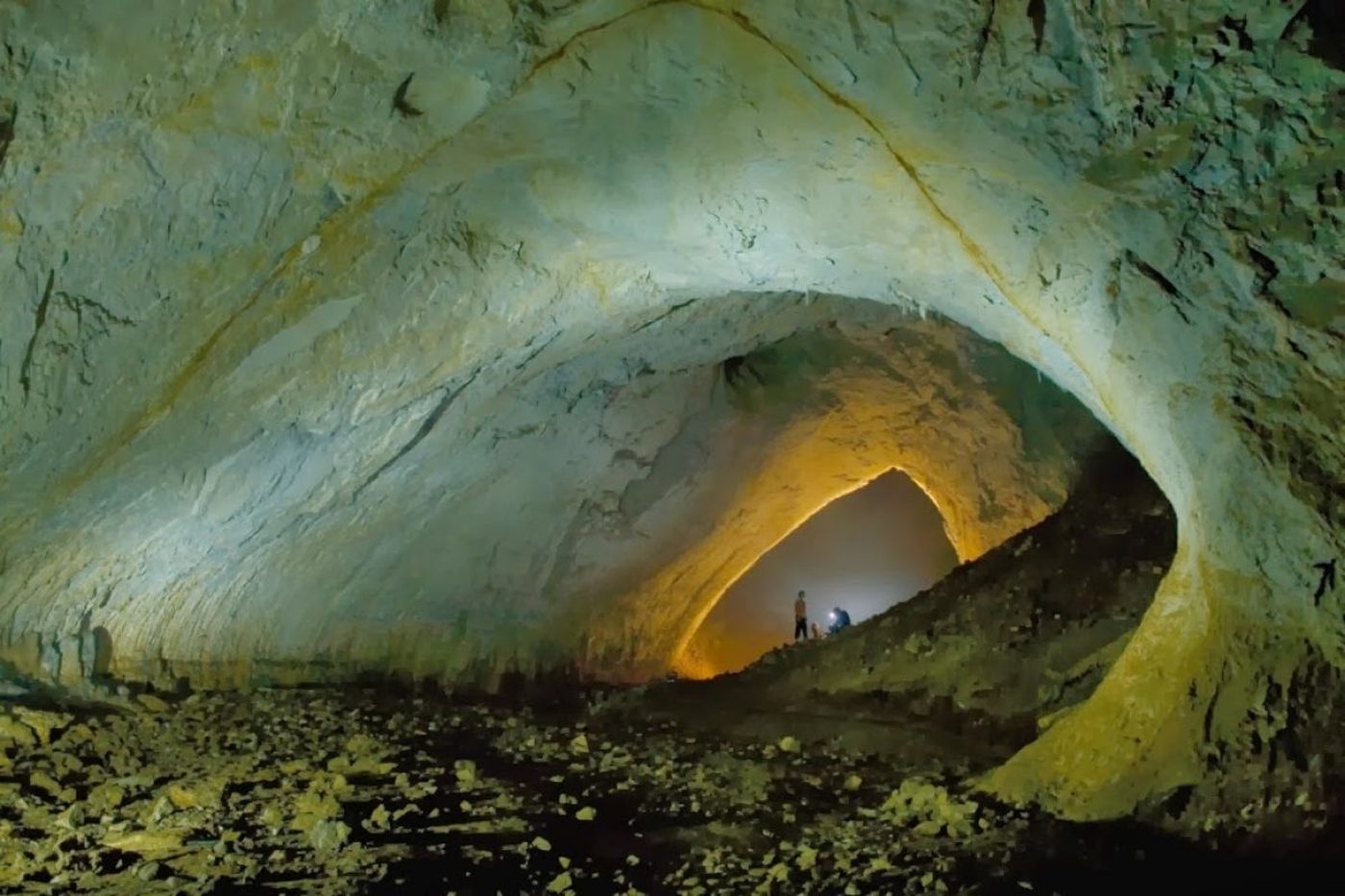Beneath the plains of southeastern Romania lies a mysterious, otherworldly ecosystem sealed off from the rest of the world for millions of years. Movile Cave is not just any cave; it’s a snapshot of a prehistoric Earth, where creatures have evolved in complete isolation, thriving in an environment devoid of sunlight and oxygen but rich in toxic gases. This extraordinary site holds secrets about life’s resilience, adaptation, and evolution—secrets that are slowly being unearthed by scientists who dare to explore it.

A World Hidden for Millions of Years
Discovered in 1986, Movile Cave shocked researchers with its unique atmosphere and lifeforms. It’s sealed tightly from the outside world, creating a complete time capsule of life unaffected by surface conditions. The air inside is hostile to most living creatures, filled with hydrogen sulfide, methane, and high levels of carbon dioxide. The oxygen levels are so low that breathing normally is impossible, requiring anyone who enters to bring their own air supply.
This isolation created a unique opportunity: Movile Cave provides a glimpse into a different Earth, one where life adapted to extreme conditions in ways we might not expect. It’s estimated that this ecosystem has been separated from the surface for over 5.5 million years—time enough for evolution to work its magic.
A Dark World Teeming with Life
In this lightless, suffocating environment, life has not only found a way to survive but has evolved to thrive. There are more than 30 species that exist nowhere else on Earth—blind, translucent creatures that have adapted to life without sunlight. Crustaceans, water scorpions, leeches, and spiders dominate the landscape, all specially adapted to rely on chemosynthesis, a process where energy is created from chemicals rather than sunlight.
One of the cave’s strangest residents is the Movile Cave snail, a species entirely unknown until its discovery here. Blind and albino, like most creatures in the cave, it represents a specialized adaptation for life in the darkness. These organisms have developed heightened senses of smell and taste, compensating for their lack of vision by becoming highly sensitive to their toxic surroundings.
A Unique Ecosystem Powered by Sulfur and Bacteria
What makes life in Movile Cave possible is the presence of special bacteria that live off sulfur and methane gases, rather than the photosynthetic energy most ecosystems rely on. These bacteria form mats along the cave walls and in pools of water, creating the foundation of the cave’s food chain. Small creatures graze on the bacteria, and in turn, larger predators feed on them, forming an intricate, self-sustained ecosystem powered not by sunlight, but by chemicals.
This kind of ecosystem—chemosynthesis-based—has drawn comparisons to deep-sea hydrothermal vents, where similar life processes occur. Movile Cave serves as a terrestrial parallel to these deep-ocean environments, hinting at how life might exist in the most extreme corners of our planet, or even on other planets entirely.
Scientific Discoveries and Possibilities
The implications of the discoveries in Movile Cave reach far beyond Romania’s borders. As scientists study this unique ecosystem, they’re gaining insights into life’s adaptability and resilience, especially in harsh conditions. Some researchers believe that studying the microbes and extremophiles in the cave could even help us understand potential extraterrestrial life, as planets like Mars and moons such as Europa might have environments where life could exist without sunlight.
Each venture into Movile Cave reveals more about its delicate ecosystem and provides further evidence of life’s tenacity. Due to the dangers and sensitivity of the cave’s atmosphere, access is extremely limited, with only a handful of scientists allowed to enter each year. Even the smallest disturbance could upset the cave’s fragile ecosystem, so each visit is approached with the utmost caution.
A Natural Wonder with Unanswered Questions
Movile Cave remains a mystery in many ways—a place where Earth’s secrets are locked in silence and darkness, awaiting patient discovery. The creatures that inhabit its toxic depths tell a story of survival, of a world far removed from our own. In an age where human reach extends to nearly every part of the globe, Movile Cave stands as a reminder that some places remain untouched, carrying whispers of ancient Earth within their hidden depths.
For scientists and explorers alike, Movile Cave is an enduring source of fascination and discovery. With each visit, we learn more about the adaptability of life and perhaps gain a deeper understanding of what life might look like in the most extreme environments, whether on Earth or beyond.

